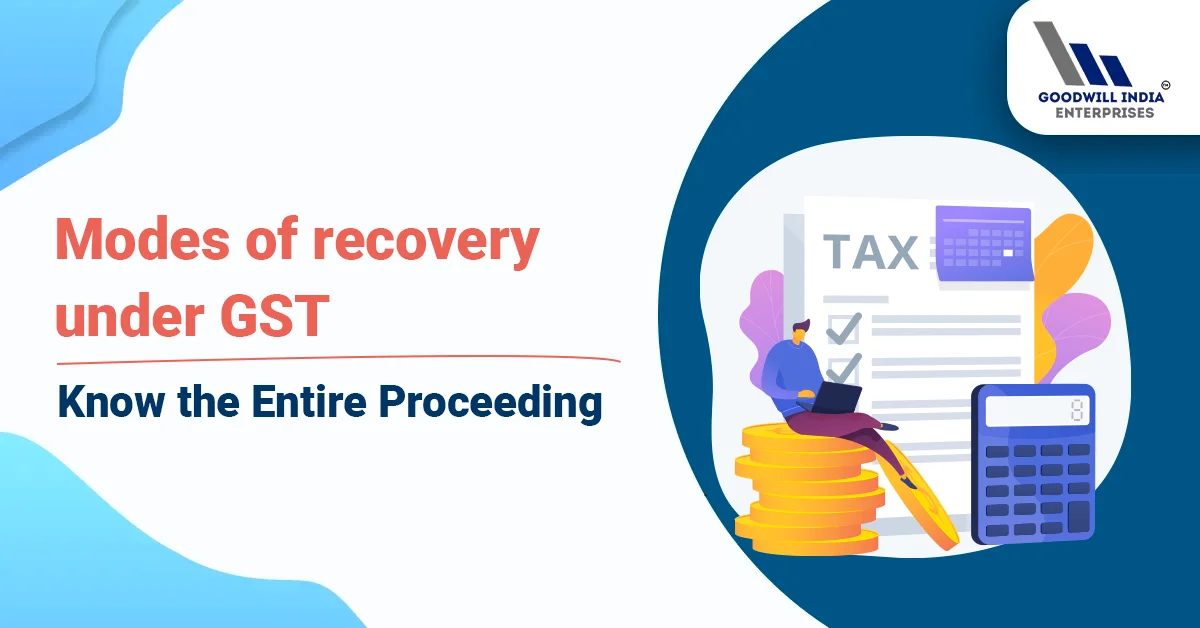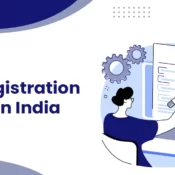
Modes of Recovery Under GST Return Filing
Goodwill Enterprises understands the importance of knowing the modes of recovery under GST return filing to ensure compliance and avoid unnecessary penalties.
In this blog, we will explore the various methods of recovery available under GST Return filing and delve into the entire proceeding. Let's dive in!Recovery through Input Tax Credit (ITC):
One of the primary modes of recovery under GST is through the utilization of Input Tax Credit (ITC). A registered taxpayer can offset the tax liability by utilizing the ITC available in their electronic credit ledger. The ITC can be used to pay off the tax liability for the same or different tax heads, such as CGST, SGST, or IGST. However, it's important to note that certain conditions must be fulfilled for availing ITC, such as possession of valid tax invoices, receipt of goods or services, and compliance with relevant provisions of the GST law. Non-compliance or erroneous claims may lead to the reversal of ITC and subsequent recovery proceedings.Recovery through Cash Payment:
When ITC is insufficient to cover the tax liability, the taxpayer is required to make cash payments to fulfill the remaining amount. Cash payments can be made through the Electronic Cash Ledger maintained on the GST portal. The taxpayer can choose to make payments either online or offline, using various authorized modes of payment such as net banking, debit/credit cards, or NEFT/RTGS. It's crucial to ensure timely payment of tax dues to avoid penalties, interest, or further recovery actions by the tax authorities. Failure to comply with payment deadlines may result in additional consequences, including prosecution and stringent recovery measures.Recovery through Detention and Sale of Goods:
Under certain circumstances, tax authorities have the power to detain and sell the goods of a defaulter to recover the outstanding tax dues. This provision allows the authorities to take possession of the goods, seize them, and subsequently sell them to recover the pending taxes. However, the power of detention and sale of goods is not absolute. The tax authorities must follow a due process and provide reasonable opportunity to the taxpayer to explain their position or rectify any discrepancies. Proper documentation, including seizure notices and sale proceedings, is essential to ensure transparency and fairness in the recovery process.Recovery through Bank Account Attachment:
In cases where other modes of recovery prove ineffective, tax authorities have the authority to attach the bank accounts of defaulting taxpayers. This process involves freezing the bank accounts and appropriating funds to recover the outstanding tax dues. Before initiating bank account attachment, tax authorities are required to follow proper legal procedures and provide sufficient notice to the taxpayer. The taxpayer has the right to represent their case and seek relief within the prescribed time limits.Conclusion:
Understanding the modes of recovery under GST return filing is crucial for businesses to ensure compliance and avoid any adverse consequences. Goodwill Enterprises recognizes the significance of adhering to the GST regulations and fulfilling tax obligations promptly. By leveraging input tax credit in India, making cash payments, and being aware of the consequences of non-compliance, businesses can navigate the recovery proceedings smoothly. Stay informed, comply with GST guidelines, and maintain transparency in your tax affairs to achieve a hassle-free business environment.
Goodwill Enterprises as one of the best auditing firms and GST Return Filing Consultant in Chennai always there to make your GST process a hassle-free experience.
For more details, look what are our services offered!!




